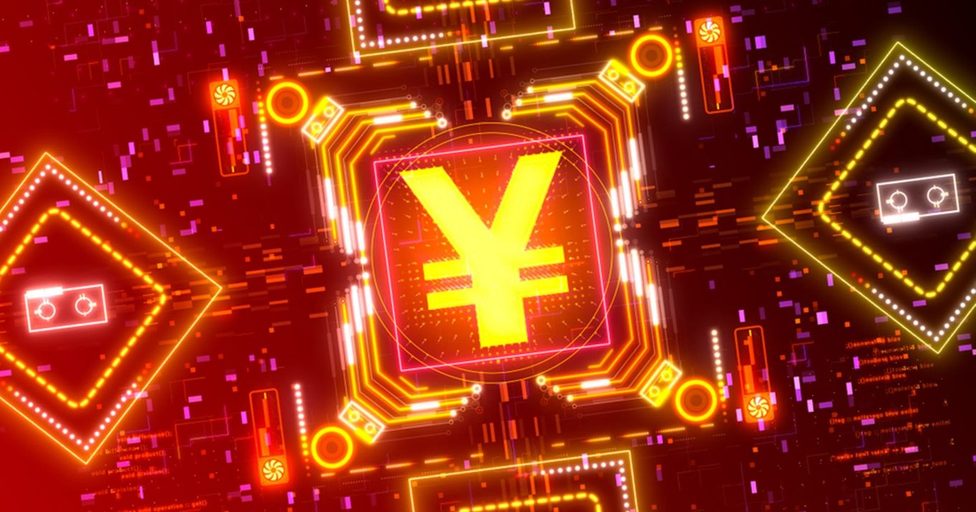
China’s much anticipated Central Bank Digital Currency (CBDC) has been leaked. The leak revealed extensive details of how the accompanying app works, a look at the visuals of the wallet, and a preview of what the currency would look like for the general public.
A digital coin from China has been much talked about, so this tease is exciting news as central banks launching digital currencies would help increase the widespread adoption of cryptoassets, which in turn would show people the benefits that cryptoassets can bring to the real world.
Clearly China is on the hunt for supremacy in cryptoassets, as well as looking to usurp the US dollar as the world’s dominant currency. Tie China’s digital currency with its intention to launch the Blockchain-based Service Network, which will help companies deploy blockchain technology in a smarter and more efficient manner, and there is no doubt the country with the world’s second biggest economy is looking to take the blockchain bull by the horns.
However, for those of us who appreciate the decentralised nature of cryptoassets, there is a fear that having the world’s most authoritarian superpower launching its own highly centralised digital currency could actually lead to more surveillance of its population. Blockchain technology enables you to track transactions and for this reason, it will be harder for people to maintain privacy. Some people are unbanked for exactly this reason.
Facebook new approach could go well with the regulator – but not with the community
Mark Zuckerberg’s social media mastodon outlined the new direction of its heavily debated Libra project. The paper published by the Libra Association makes three key changes: Libra will be permissioned at first, it will only be stablecoins, and it will use regulated nodes (VASPS). The crypto community could in fact fully disregard the Libra project, highlighting these three changes as the foundation ditching its decentralised ethos.
I think these are positive changes though, as it is important for projects from companies as large as Facebook to take a regulated approach, a view eToro CEO Yoni Assia discussed in eToro’s position paper on the matter, published last November. Overall, it is important that firms looking to launch these sorts of cryptoasset ecosystems take their first step by supporting multiple currencies on-chain. Only then, once they have the trust of both the regulator and of the consumer, should they look to launch novel crypto tokens.
Bitcoin halving sparks search interest – and winners could span the whole sector
Ahead of the bitcoin halving we have seen a massive increase in interest in the event. Google Trends, which tracks increases in the frequency and popularity of specific search phrases, shows that ‘bitcoin halving’ is currently at 100% interest, which means it is at the peak of its popularity, garnering 28% more interest for the search term compared to the 2016 halving.
I’ve already talked about where I think the price of bitcoin is heading following May’s halving, and it is well-documented that other cryptoassets follow the performance of bitcoin, to a greater or lesser degree. However, there are some cryptoassets that could even outperform the original crypto. One of these is Ethereum. Given that there are various defi applications being built on Ethereum that use bitcoin as collateral or as a means of bringing liquidity to decentralised exchanges, the overall Ethereum network would grow and develop, if bitcoin prices increase following the halving and we see greater bitcoin inflows into these applications.
Other winners from the halving could be application specific integrated circuits (ASICs) manufacturers, such as NYSE-listed Canaan. With the mining reward being cut in half, miners will have to operate more efficiently, placing an emphasis on having the most up to date ASICs.
UBI-based cryptos could be the vaccine for wealth inequality
Many countries are beginning to release data showing some positive signs with regards to controlling the coronavirus’ impact. Some of the world is also beginning to discuss how we solve some of the ills that the coronavirus has laid bare when it comes to wealth inequality.
With central banks now adopting helicopter money policies to directly put wealth into citizens’ pockets, the use of blockchain technology could help solve some of the logistical issues that come with such a grand scheme. This becomes increasingly important when we think about the vast number of people across the globe that do not have a bank account to receive such capital. By giving everyone a crypto wallet central banks could directly deposit this money into them. It also removes the need for people to jump through the regular bureaucratic hoops of opening a bank account.
GoodDollar itself is a research hub, funded by eToro, exploring how UBI principles could be deployed through cryptoassets to address global wealth inequality. Theoretically, everyone can receive a GoodDollar token into a crypto wallet.
This is just one of the ways that blockchain and cryptocurrencies can help to build a better future, if we choose to use them. And we should.
Commentary by Simon Peters, UK Platinum Account Manager, eToro
Tradersdna is a leading digital and social media platform for traders and investors. Tradersdna offers premiere resources for trading and investing education, digital resources for personal finance, market analysis and free trading guides. More about TradersDNA Features: What Does It Take to Become an Aggressive Trader? | Everything You Need to Know About White Label Trading Software | Advantages of Automated Forex Trading




































